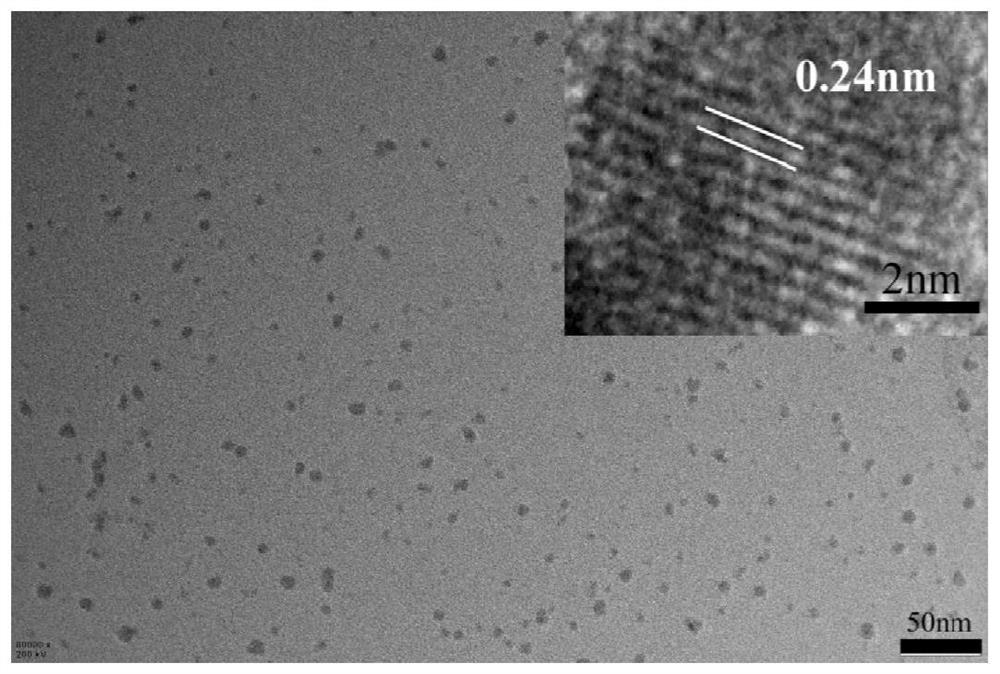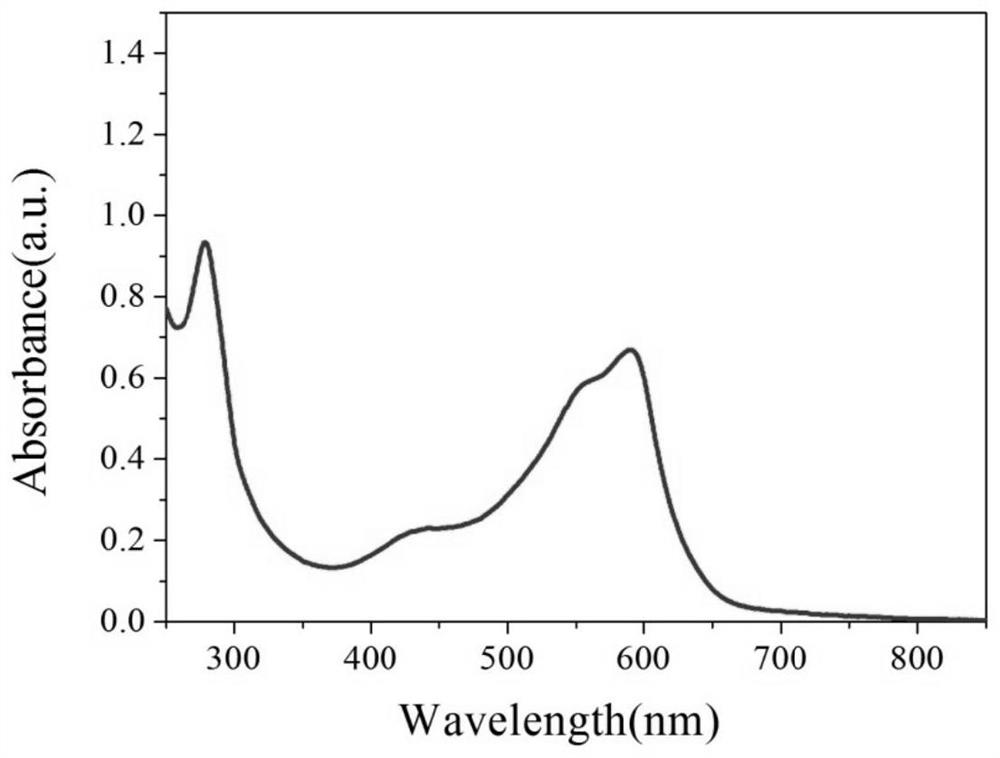A kind of red carbon dot material, preparation method and application thereof
A carbon dot, red fluorescence technology, applied in the field of luminescent carbon nanomaterial preparation, can solve the problems of limited tissue penetration, low singlet oxygen yield, complex preparation process, etc. Highly toxic, simple to prepare effect
- Summary
- Abstract
- Description
- Claims
- Application Information
AI Technical Summary
Problems solved by technology
Method used
Image
Examples
Embodiment 1
[0038] Weigh 0.5g of potassium dihydrogen phosphate and 0.01g of methylene blue powder into a 50mL beaker, add 15mL of ultrapure water, stir well, then transfer to a 20mL reaction kettle, and raise the oven temperature to 200°C for 8h reaction. Then, after cooling to room temperature, it was filtered through a 0.22 μm microporous membrane, and the filtrate was taken, and then dialyzed at 1000 Da for 24 h. Finally, the red fluorescent carbon dot powder is obtained by freeze-drying.
[0039] The transmission electron microscope (TEM) image of the obtained powder dissolved in ultrapure water is as follows figure 1 As shown, it shows that the carbon dots with a diameter of about 6.67 nm have obvious lattice fringes, indicating that the carbon dots are successfully prepared.
[0040] The obtained red carbon dots were tested for UV-visible absorption, such as figure 2 As shown, it is shown that the carbon dots have strong absorption at 280 nm and 590 nm, and still maintain strong...
Embodiment 2
[0048] Weigh 0.25g of sodium dihydrogen phosphate and 0.01g of methylene blue powder into a beaker, add 15mL of ultrapure water, stir well, then transfer to a reaction kettle, raise the oven temperature to 200°C for 8h reaction. Then, after cooling to room temperature, it was filtered through a 0.22 μm microporous membrane, and the filtrate was taken, and then dialyzed at 1000 Da for 24 h. Finally, the red carbon dot powder is obtained by freeze-drying.
Embodiment 3
[0050] Weigh 0.5g of potassium phosphate and 0.01g of methylene blue powder into a beaker, add 15mL of ultrapure water, stir well, then transfer to the reaction kettle, raise the oven temperature to 200°C and react for 8h. Then, after cooling to room temperature, it was filtered through a 0.22 μm microporous membrane, and the filtrate was taken, and then dialyzed at 1000 Da for 24 h, and freeze-dried to obtain red carbon dot powder.
PUM
 Login to View More
Login to View More Abstract
Description
Claims
Application Information
 Login to View More
Login to View More - R&D
- Intellectual Property
- Life Sciences
- Materials
- Tech Scout
- Unparalleled Data Quality
- Higher Quality Content
- 60% Fewer Hallucinations
Browse by: Latest US Patents, China's latest patents, Technical Efficacy Thesaurus, Application Domain, Technology Topic, Popular Technical Reports.
© 2025 PatSnap. All rights reserved.Legal|Privacy policy|Modern Slavery Act Transparency Statement|Sitemap|About US| Contact US: help@patsnap.com



